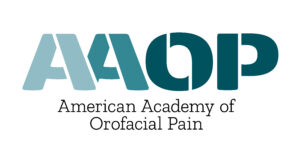Daniele Manfredini received his DDS from the University of Pisa, Italy in 1999, a MSc in Occlusion and Craniomandibular Disorders in 2001 from the same University, a PhD in Dentistry from the ACTA Amsterdam, The Netherlands, in 2011, and a Post-Graduation Specialty in Orthodontics from the University of Ferrara, Italy, in 2017. He was a clinical fellow at the Section of Prosthetic Dentistry, Department of Neuroscience, University of Pisa, Italy until 2005. Since 2006, Daniele Manfredini has been Assistant Professor and coordinator of the research projects at the TMD Clinic, Department of Maxillofacial Surgery, University of Padova, Italy, and he held teachings in Prosthodontics and TMJ Physiopathology, and in Bruxism and Parafunctions at the School of Dentistry, University of Padova until 2016.
Currently, Daniele Manfredini holds teaching in Oral Physiology and in Clinical Gnathology at the School of Dentistry, University of Siena, Italy. On January 2017, the Italian Ministry of University and Research (MIUR) appointed him as a Full Professor by scientific merit at the age of 41. Daniele Manfredini authored more than 190 papers in the field of bruxism and temporomandibular disorders in journals indexed in the Medline database (Scopus H-index=34). He also edited, among the others, the book “Current concepts on temporomandibular disorders” (Quintessence Publishing, 2010), including contributions from 45 world-renowned experts, and co-authored several textbooks on the same topics.
This is an exciting time in the field of Headache Medicine, as an entirely new class of drugs has been developed that specifically targets the pathophysiology of Headache. Historically, preventive medications for headache have been borrowed from other drug classes (such as antidepressants, anti-epileptic medications, and blood pressure medications). Recent advances have demonstrated that Calcitonin Gene Related Peptide (CGRP) is released with the stimulation of trigeminal sensory nerves during migraine attacks. Inhibiting CGRP has resulted in significant migraine and cluster headache improvements. We now have three FDA approved preventive CGRP medications for migraine, one of which is also FDA approved for cluster headache. More are anticipated to receive FDA approval. This presentation will provide an overview of migraine treatment options and the significance of the new CGRP treatment options as being the first migraine preventive options developed to directly target migraine pathophysiology. Potential benefits, risks, and side effects will also be discussed, with a conversation balancing the excitement with the clinical reality of these new treatment approaches.
Learning objectives:
• Provide an overview of migraine medication treatment options
• Explain Calcitonin Gene Related Peptide (CGRP) & its role in migraine
• Understand different CGRP treatment options
• Recognize potential benefits, risks, & side effects of CGRP medications
• Discuss excitement & clinical reality of these new treatment options



Leave A Comment